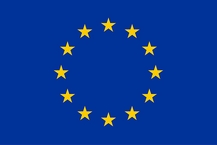Informationstechnik - Sicherheitsverfahren - Schlüsselmanagement - Teil 3: Asymmetrische Techniken verwendende Mechanismen Information technology - Security techniques - Key management - Part 3: Mechanisms using asymmetric techniques
Informationstechnik - Sicherheitsverfahren - Schlüsselmanagement - Teil 3: Asymmetrische Techniken verwendende MechanismenInformation technology - Security techniques - Key management - Part 3: Mechanisms using asymmetric techniques |
| Shortname | ISO/IEC 11770-3:2015-08 |
|---|---|
| Dokumentnummer | 11770-3 |
| Ausgabedatum | 2015-08-00 |
| Erwerb bei | https://www.vde-verlag.de/iec-normen/222017/iso-iec-11770-3-2015.html |
| Internationales Gremium | ISO/IEC JTC 1/SC 27 |
| Thema | Schlüsselmanagement , Sicherheitsverfahren |
| Sektor | Informationstechnik und Telekommunikation |
| Branche | Informationstechnik |
| Level of Abstraction | 4 |
- Einführungsbeitrag (short) EN:
ISO/IEC 11770-3:2015 defines key management mechanisms based on asymmetric cryptographic techniques. It specifically addresses the use of asymmetric techniques to achieve the following goals: a) establish a shared secret key for use in a symmetric cryptographic technique between two entities A and B by key agreement. In a secret key agreement mechanism, the secret key is computed as the result of a data exchange between the two entities A and B. Neither of them should be able to predetermine the value of the shared secret key; b) establish a shared secret key for use in a symmetric cryptographic technique between two entities A and B via key transport. In a secret key transport mechanism, the secret key is chosen by one entity A and is transferred to another entity B, suitably protected by asymmetric techniques; and c) make an entity's public key available to other entities via key transport. In a public key transport mechanism, the public key of entity A shall be transferred to other entities in an authenticated way, but not requiring secrecy. Some of the mechanisms of ISO/IEC 11770-3:2015 are based on the corresponding authentication mechanisms in ISO/IEC 9798-3. ISO/IEC 11770-3:2015 does not cover certain aspects of key management, such as key lifecycle management, mechanisms to generate or validate asymmetric key pairs, and mechanisms to store, archive, delete, destroy, etc. keys. While ISO/IEC 11770-3:2015 does not explicitly cover the distribution of an entity's private key (of an asymmetric key pair) from a trusted third party to a requesting entity, the key transport mechanisms described can be used to achieve this. A private key can in all cases be distributed with these mechanisms where an existing, non-compromised key already exists. However, in practice the distribution of private keys is usually a manual process that relies on technological means such as smart cards, etc. ISO/IEC 11770-3:2015 does not specify the transformations used in the key management mechanisms.
- Anmerkung:
Eingeschränkter sachlicher Geltungsbereich in Abschnitt 1 (Scope). / Achtung: Vorgesehene Änderung durch ISO/IEC 11770-3 DAM 1 (2017-01). | Geändert durch ISO/IEC 11770-3 AMD 1 (2017-11), ISO/IEC 11770-3 Technical Corrigendum 1 (2016-05)
- ANSI X 9.42 (2001)
- ANSI X 9.63 (2011)
- IEEE 1363 (2000)
- IETF RFC 2246
- IETF RFC 6509
- ISO 7498-2 (1989-02)
- ISO/IEC 10118-1 (2000-06)
- ISO/IEC 10118-2 (2010-10)
- ISO/IEC 10118-2 Technical Corrigendum 1 (2011-12)
- ISO/IEC 10118-3 (2004-03)
- ISO/IEC 10118-3 AMD 1 (2006-02)
- ISO/IEC 10118-3 Technical Corrigendum 1 (2011-12)
- ISO/IEC 10118-4 (1998-12)
- ISO/IEC 10118-4 AMD 1 (2014-11)
- ISO/IEC 10118-4 Technical Corrigendum 1 (2014-07)
- ISO/IEC 10181-1 (1996-08)
- ISO/IEC 11770-1 (2010-12)
- ISO/IEC 11770-6
- ISO/IEC 14888-2 (2008-04)
- ISO/IEC 14888-3 (2006-11)
- ISO/IEC 15946-1 (2008-04)
- ISO/IEC 18031 (2011-11)
- ISO/IEC 29150 (2011-12)
- ISO/IEC 9594-8 (2008-12)
- ISO/IEC 9796-2 (2010-12)
- ISO/IEC 9796-3 (2006-09)
- ISO/IEC 9797 (1994-04)
- ISO/IEC 9798-3 (1998-10)
-

Transnational Branche: Informationstechnik
Ergebnis 66RICHTLINIE (EU) 2022/2557 DES EUROPÄISCHEN PARLAMENTS UND DES RATES vom 14. Dezember 2022 über die Resilienz kritischer Einrichtungen und zur Aufhebung der Richtlinie 2008/114/EG des RatesRL (EU) 2022/2557
Einzelne Vorschriften
Alle

Transnational Branche: Informationstechnik
Ergebnis 67DELEGIERTE VERORDNUNG (EU) 2022/30 DER KOMMISSION vom 29. Oktober 2021 zur Ergänzung der Richtlinie 2014/53/EU des Europäischen Parlaments und des Rates im Hinblick auf die Anwendung der grundlegenden Anforderungen, auf die in Artikel 3 Absatz 3 Buchstaben d, e und f der Richtlinie Bezug genommen wirdVO (EU) 2022/30
Einzelne Vorschriften
Alle

Transnational Branche: Informationstechnik
Ergebnis 68Verordnung (EU) 2022/1925 des Europäischen Parlaments und des Rates vom 14. September 2022 über bestreitbare und faire Märkte im digitalen Sektor und zur Änderung der Richtlinien (EU) 2019/1937 und (EU) 2020/1828 (Gesetz über digitale Märkte)VO (EU) 2022/1925
Einzelne Vorschriften
Art. 7 III, IV, VI, IX; 8 I

Transnational Branche: Informationstechnik
Ergebnis 69Verordnung (EU) 2022/2065 des Europäischen Parlaments und des Rates vom 19. Oktober 2022 über einen Binnenmarkt für digitale Dienste und zur Änderung der Richtlinie 2000/31/EG (Gesetz über digitale Dienste)VO (EU) 2022/2065
Einzelne Vorschriften
Art. 22 I; 28 I; 40 II, V lit. b; VIII lit. d, XIII; 42 V
